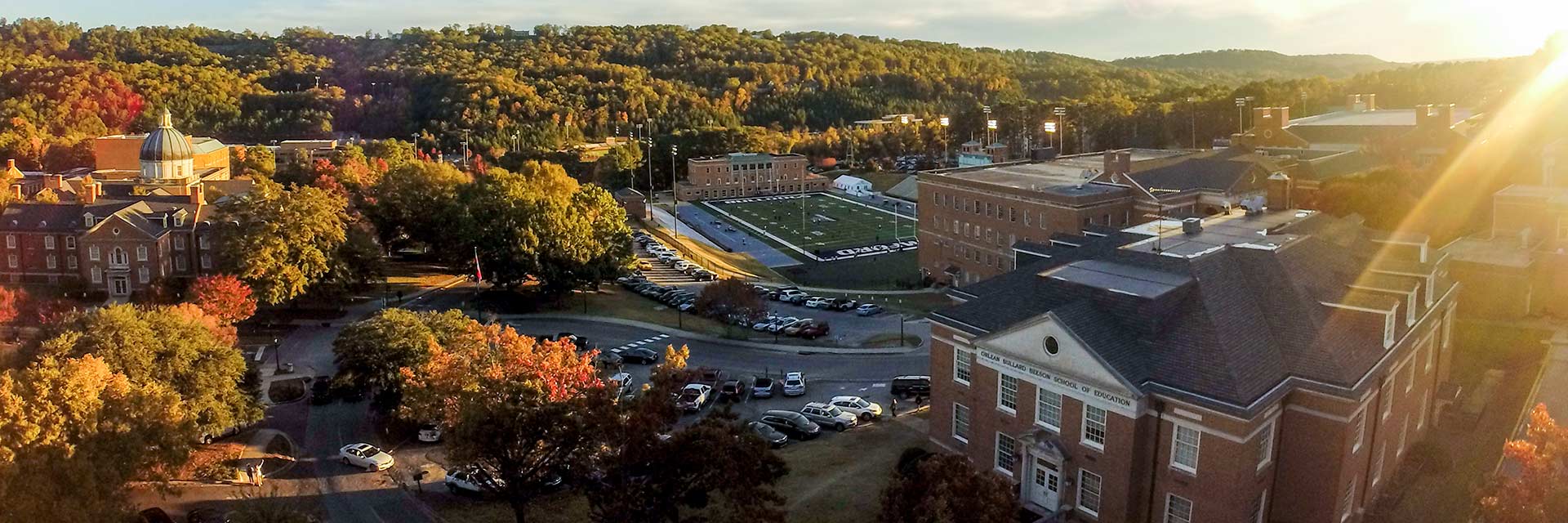Samford University maintains a public safety department as a proprietary function of the university with jurisdiction to enforce the rules and regulations of the university and the State of Alabama on university property. The public safety department is staffed 24 hours a day to provide immediate availability for emergency response, performance of security patrols, monitoring of people on campus and providing other services relevant to the campus community. Members of the department maintain a close working relationship with other local, state and federal law enforcement authorities and emergency service agencies on matters related to the safety and security of the campus.
Any incidents involving suspected criminal activity or violations of university rules and regulations related to the safety and security of people or property should be reported to the public safety department, which maintains records on incidents that have occurred on campus. Such statistical data is available for examination.
Missing Student Policy
Policy
The Higher Education Opportunity Act (HEOA) requires that institutions of higher education who maintain on-campus housing facilities have a policy and procedure in place for missing student notification. Such housing may be in a resident hall located on campus or in any other facility that is rented or leased by the university for the purpose of providing residential housing to its students. For the purpose of this policy, a “Residential Student” shall be deemed a student who is lawfully residing in such a facility. At the discretion of the university, this policy may be extended to include efforts to assist local law enforcement agencies in investigation of reports of missing students who live off campus.
Students will be informed each academic year that each student age 18 or above has the option to identify a person designated as a confidential contact to be contacted by Samford University not later than 24 hours after the time the student is determined to be missing. The confidential contact may be a person designated by the student in addition to the emergency contact listed with the university. Students who are under age 18 who are not emancipated will be informed each academic year that the institution is required to notify the custodial parent not later than 24 hours after the time the student is determined to be missing. Only university officials or law enforcement officers in furtherance of a missing person investigation may have access to this information.
Notification
Initial notification regarding the suspected or actual status of a student suspected of being a missing person shall be made to the following person(s) or organizations:
- The Department of Public Safety and Emergency Management
- The Dean of Students
- The Vice President of Student Affairs
- The Director of Residence Life or their designee (RAs)
Determination of Missing Person Status
A student is determined to be missing when a report comes to the attention of the university and the university determines the report to be credible. Circumstances may include, but are not limited to establishing that:
- A student is out of contact after reasonable efforts to reach that person by phone calls, e-mails, and/or in-person attempts to establish contact
- Circumstances indicate an act of criminality involved, even lacking 24 hours in time;
- Circumstances indicate that physical safety is in danger, even lacking 24 hours in time;
- Circumstances become known that medicine dependence may threaten life or health, even lacking 24 hours in time; existence of a physical/mental disability indicates that the student’s physical safety is in danger, even lacking 24 hours in time.
Incident/Offense Report
Upon determination that a student may be missing, an incident/offense report shall be completed, and the following information should be established and documented in the report:
- Name and contact information of the person reporting the student missing
- Name and vital information of the student reported to be out of contact
- Nature of the circumstances supporting the determination that the student is out of contact (time/date/location last seen or in contact with)
- Avenues to establish that the student remains out of contact:
- Failure to respond to phone, e-mail and in-person attempts to contact by university officials or others
- Parental notice or notice from reporting person outside the university;
- Establishment of lapse of time of class attendance, lapse of affiliation with roommates and friends, or use of Samford University facilities/services
- Concern of an incident of criminality or safety, etc.
- Times/dates/persons notified of status of student.
Investigative Procedures
Upon determination that a student may be classified as a “missing person,” university officials may use any or all of the following resources to assist in locating the student:
- Talk to the student’s RA or roommate to see if anyone can confirm the missing student’s whereabouts and/or confirm the date, time, and location the student was last seen.
- Call the student’s room.
- Check the student’s residence hall room.
- Call and text the student’s cell phone and call any other telephone numbers on record.
- Send the student an e-mail.
- Contact or call any other on-campus or off-campus friends or contacts that are made known. This could include checking a student’s social networking sites.
- Check all possible locations mentioned by the parties above, including but not limited to library, residence hall lounges, University Center, etc.
- Ascertain the student’s auto make, model and license plate number and have units check parking lots for the presence of the student’s vehicle.
- Secure a current student ID or other photo of the student.
- The university's information and technology section may be asked to provide electronic logs for the purpose of determining the last login, access and use of the University's IT network.
- If the missing student is under the age of 18 years and not an emancipated individual, within 24 hours of the determination that the student is missing, the dean of students must notify the student's custodial parent or guardian as identified in the university's records. If the missing student is over the age of 18 years or an emancipated individual, within 24 hours of the determination that the student is missing, the dean of students must notify the individuals found in the emergency contact information that is recorded by the university. If the emergency contact information is absent or unusable, the appropriate law enforcement agency will be informed and asked to assist in notification.
- University officials may notify local law enforcement agencies for information and assistance.
Reporting Located Persons
If the missing student is located, a supplemental incident/offense report will be completed indicating the facts/circumstance surrounding the return of the individual. The university Department of Public Safety shall notify parties previously contacted and will advise them of the return of the student in a timely manner.


